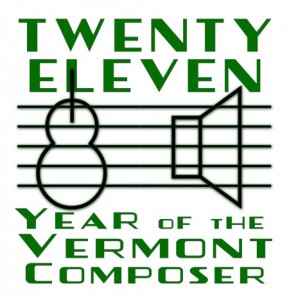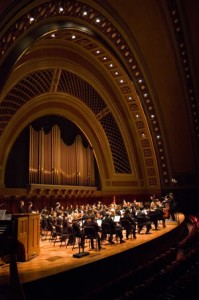There was a certain amount of preliminary drama in the few days before the first performances of Harrison Birtwistle’s Violin Concerto by the Boston Symphony Orchestra, on March 3 through 5, during the course of which James Levine, who has been plagued by a series of health problems for several years and who had canceled the preceding concert due to illness, first announced that he was unable to participate in any of remaining concerts of the current season, and then, a day later, due to those recurring health problems, resigned as the orchestra’s music director, leaving considerable doubt about how the remainder of the season’s programming might be changed and who might be conducting the orchestra in those concerts. The program containing the Birtwistle remained as planned, with Marcelo Lehninger, one of the BSO’s assistant conductors. Although Mr. Lehninger’s abilities are certainly considerable, the extremely high level of playing in the whole concert was probably attributable as much to the presence of Christian Tetzlarff, who played in all the works on the concert, which included, as well as the Birtwistle, Mozart’s Rondo in C, K. 373 and the Bartok Concerto No. 2.
Birtwistle’s Violin Concerto is in one movement, lasting about twenty-five minutes. Its intense dramatic quality is not as a result of movement or of development but of what Birtwistle called endless exposition, the continual tension caused by the rotation of fixed and unchanging highly characterized musical identities, which is a quality his music has always shared with that of Varese. The part of the solo violin which is almost constant throughout the work has an intense and almost delirious vocal quality, which seems new in his instrumental music. Over the course of the work the soloist is joined with the first flute, the piccolo, a solo ‘cello, the oboe, and the bassoon, respectively, in a series of duets which Birtwistle describes as “a way of focusing the dialog.” Although the orchestra is large, there is always considerable registral space left for the violin, as a result of which there is, in a way that it remarkable, never any problem with balance between the soloist and the orchestra; in fact the texture is extraordinarily transparent throughout, despite its considerable complexity. The concerto is profoundly beauty and its drama is deeply satisfying, and the performance of Tetzlaff, Lehninger, and the orchestra was majesterial.
The American tuba virtuoso Harvey Phillips devoted his life to teaching and encouraging younger tuba players, promoting the tuba as an instruments, and especially to expanding the repertory for the instrument. Phillips had a long and close association with Gunther Schuller, as a free lance musician in New York in the 1950’s and 60’s, and as part of the administrative team at the New England Conservatory during the early years when Schuller was president of that institution, and their friendship continued when Phillips became a professor at Indiana University, where he taught from 1971 to 1994. Schuller wrote one of his best works, the Capriccio for tuba and chamber orchestra for Phillips in 1969, and before he died in 2010, after he had already stopped playing the tuba, Phillips asked Schuller to write another work for tuba and orchestra. Schuller’s Second Tuba Concerto, which was given its first performance by Mike Roylance, the tuba player of the Boston Symphony, with the Boston University Symphony Orchestra conducted by the composer, on February 15, then, as well as being a major addition to the tuba repertory, is a testament to Schuller’s respect, admiration, and affection for a dear friend, personified by his instrument.
Schuller’s career as an orchestral and jazz musician and a virtuoso horn player as well as an active conductor or all sorts of music has given him an encyclopedic knowledge of the orchestra, and he employs the full panoply of possibilities to highlight all the virtues of the tuba as a solo instrument, demonstrating its enormous range and its agility and flexibility in every register, as well as its ability as a lyric, expressive instrument, capable of long singing phrases. Since balance with the orchestra is not a problem with the tuba, Schuller did not need to clear out a registral space for the instrument. Instead he filled the orchestra’s ranks with other extraordinarily low instruments, contrabassoon, contrabass clarinet, as well as other low brass, including another tuba, and he revels in the neighborhood made possible by such scoring: the beginning of the first movement featured the soloist accompanied by five double basses, and there are duets with the soloist and other low wind instruments, including, in the last movement, a climactic duet cadenza for the soloist and the orchestral tuba.
In the day Schuller was a proud twelve-tone composer, albeit one who mixed up serialism with jazz, both written and improvised, producing music known by the name he coined for it, third stream. In these post-modern times he has moved away both from serialism and to some extent from jazz, to a more mild, generally modernist language. The four movements of the concerto, arranged in a slow-fast-slow-fast order partake of this later style with, especially in the third movement, a sort of aria for the tuba with Bartokian shadings, handsome results. The last movement, which begins with a slow introduction with ominous qualities, leading to an intensely energetic fast movement, manages to include, seamlessly, a relatively lengthy quotation from the Capriccio. Roylance’s performance of this genial appealing work was sovereign; the poise and polish of his playing was matched by that of the orchestra. At 85, Schuller seems to be hardly at all slowed down by age. Not only did he conduct the entire concert by the BU orchestra, which also contained the Prelude to The Creation by Haydn, and the Brahms Fourth Symphony, two hours before the concert he was across town at the New England Conservatory, introducing a performance of his second String Quartet by the Boromeo Quartet.



 On February 17th, Vermont Governor Peter Shumlin declared 2011 the “Year of the Composer” in Vermont, the first such proclamation in the country. Getting the proclamation itself — little more than a prosaic document signed by a friendly politician — and getting something useful out of the proclamation are two separate stories, one still in the process of being written.
On February 17th, Vermont Governor Peter Shumlin declared 2011 the “Year of the Composer” in Vermont, the first such proclamation in the country. Getting the proclamation itself — little more than a prosaic document signed by a friendly politician — and getting something useful out of the proclamation are two separate stories, one still in the process of being written.
